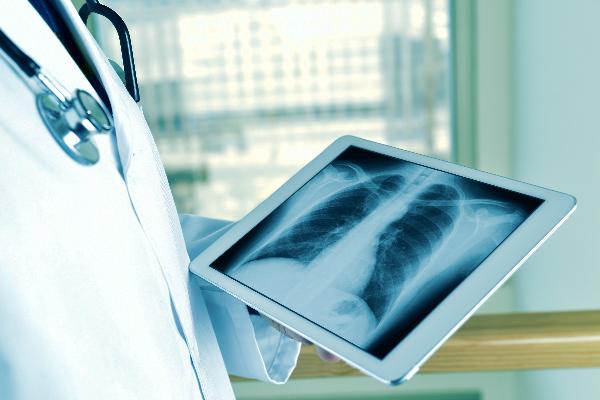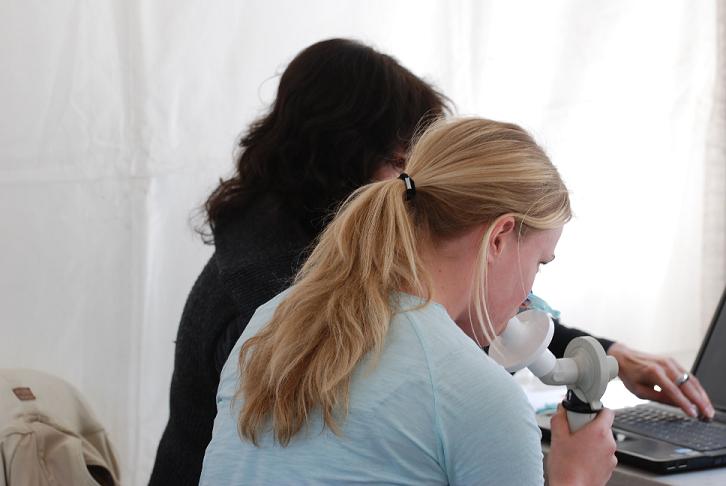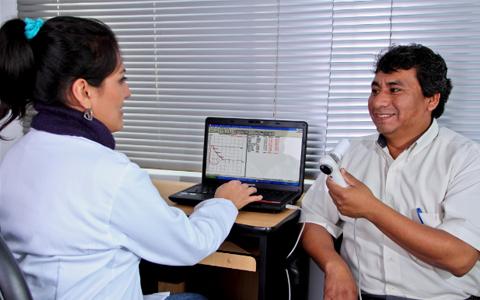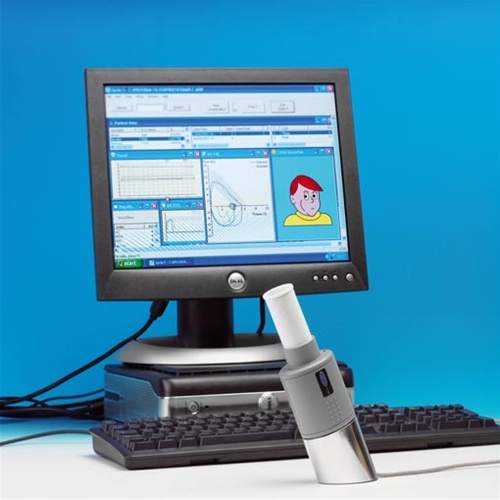Spirometry: How It Works and Why It's Necessary According to data from the U.S. Office of Disease Prevention and Health Promotion , more than 23 million Americans suffer from asthma, roughly 13.6 million Americans suffer from COPD, and another 13 million or so are dealing with as-of-yet undiagnosed COPD. As a result, health insurance rates have risen, national productivity has dropped, and significant national expenditures have accrued. In the case of asthma, the ODPHP estimates that related expenditures total approximately $20.7 billion.ยน With these and other conditions causing severe breathing difficulty for so many people nationwide, it comes as no surprise that medical professionals continue to search for the best ways to diagnose and treat these patients. By improving these individuals' health and quality of life, the healthcare sector can also help reduce the strain that these lung-related conditions place on the American economy and the insurance industry. Proper Lung Function Is Essential for Overall Health and Happiness  Every part of the human body requires oxygen to function. Our tissues are continuously being provided with the necessary oxygen supply via our bloodstream; this blood only becomes properly oxygenated by passing through the lungs. For this reason, being able to take in enough air is paramount to supporting human life. In a healthy individual, the lungs are able to take in a sufficient volume of air to properly oxygenate the blood, as well as exhale fully to properly expel carbon dioxide. In a person with an obstructive or inflammatory breathing condition, these healthy functions may suffer significantly. Beyond the simple biological need all humans have for oxygen, pulmonary (lung) function is of major importance to a person's overall enjoyment and quality of life. Because breathing is an involuntary function of the body, it's something healthy individuals tend to take for granted. For those living with breathing conditions, difficulty breathing properly translates into difficulty performing regular tasks. For those who love to stay fit and active, play sports, and/or enjoy the outdoors, breathing problems can be especially frustrating. For some, such restrictions on physical activity can even lead to depression. In modern medicine, since there is no one single test that can provide the full picture, there are a number of tests doctors can perform to evaluate a patient's lung health. In general, these tests typically address how much air the lungs can hold (lung capacity), how quickly they can inhale and exhale, and how well the lungs pass oxygen into (and remove carbon dioxide from) the blood. The most popular types of tests include gas diffusion, stress tests, body plethysmography, inhalation challenge tests, and spirometry. Measuring Lung Capacity and Function with Spirometry
Spirometry is a key element in the process of diagnosing chronic lung conditions such as asthma, chronic obstructive pulmonary disease (COPD) and other conditions that can cause a patient to have difficulty breathing. In patients who have already been diagnosed with such a condition, spirometry may be used as part of an ongoing care plan to assess how well symptoms are being treated and/or managed. The testing itself is performed with the aid of a medical device known as a spirometer. Many spirometers are essentially digital devices with plastic tubes into which the patient is supposed to breathe. A more technologically advanced spirometer design is simply a breathing tube connected to a small dongle or another element that plugs into a computer and displays results via software.
The process of spirometry itself is quite simple; to perform the test, the patient is usually seated and given a nose clip to keep the nostrils shut. Then, creating a seal around the tube with his or her mouth, the patient takes a long, deep breath in, followed by a long, hard breath out. The test is then repeated a few more times to get enough data to ensure accurate results and account for any variation. The whole testing process is very quick and can usually be completed in under 15 minutes.
The results of spirometry testing come in the form of two key indicators of lung function: forced vital capacity (FVC) and forced expiratory volume (FEV-1). Forced vital capacity is a measurement of the maximum amount of air a patient can exhale forcefully after a full deep breath. If this measurement is lower than average, it indicates some level of breathing restriction. Forced expiratory volume is a measurement of how much air can be forcefully expelled from the lungs over the course of one second. Lower-than-normal FEV-1 values suggest a breathing obstruction. The lower the value, the more severe the obstruction. By considering the results of the spirometry, alongside the results of other lung function tests and the patient's description of symptoms, a pulmonary specialist can determine whether an individual fits a specific diagnosis. Other testing may be necessary to determine whether breathing difficulties are spurred by physical activity or allergies. Armed with all of this information, the doctor can then work with the patient to create a treatment plan and find appropriate medications and/or exercises to help control, reduce, or even eliminate symptoms. Patient Safety and Preparatory Measures In general, spirometry is considered a very safe form of testing, as it is non-invasive and requires very little physical exertion. In patients whose lung capacity or function is compromised, however, performing the test can be somewhat more difficult. Patients may feel briefly dizzy or short of breath immediately following testing, but this usually subsides quickly. As there is some minor risk to those in poor cardiovascular condition, spirometry is not used with patients who have certain heart conditions or have recently had a heart attack. Patients preparing for a spirometry test are asked to wear loose-fitting clothing and avoid eating a large amount of food beforehand so that the chest can move freely when taking a deep breath. Restrictive clothing and an expanded stomach can interfere with the lungs' ability to expand. Some patients are also given restrictions on whether inhaled medications like albuterol can or cannot be used before testing.
The Importance of a Decent Spirometer Any measurement is only as good as the measuring device being used. A ruler with inaccurate markings will provide inaccurate results, and a scale not properly calibrated will display an inaccurate weight. In the case of measuring lung capacity and assessing overall lung function, it's just as important to have a properly manufactured, calibrated, and quality-checked spirometer. The repercussions of using an improperly functioning device can be significant when it comes to medical diagnoses and treatments. If a patient is diagnosed with a condition he or she does not actually have, unnecessary treatments or medications may be prescribed, costing them money and potentially even doing harm to a perfectly healthy individual. Perhaps even worse, an inaccurate result could leave a person who does have a serious lung condition without a proper diagnosis, leading to continued confusion and breathing difficulty without proper treatment. Save on High-Quality Spirometers and Other Medical Equipment with Medical Device Depot If you run a clinic that performs lung function testing, Medical Device Depot can offer you high-quality spirometers and other medical equipment at great prices. With a focus on making healthcare tools and supplies affordable for medical professionals, we strive to help our customers give their patients quality medical care and accurate test results. To learn more about our spirometers and other devices from brands like Welch Allyn, MIR, Micro Direct, Midmark, SDI, and ndd, contact our friendly customer service staff today at (877) 646-3300. |



